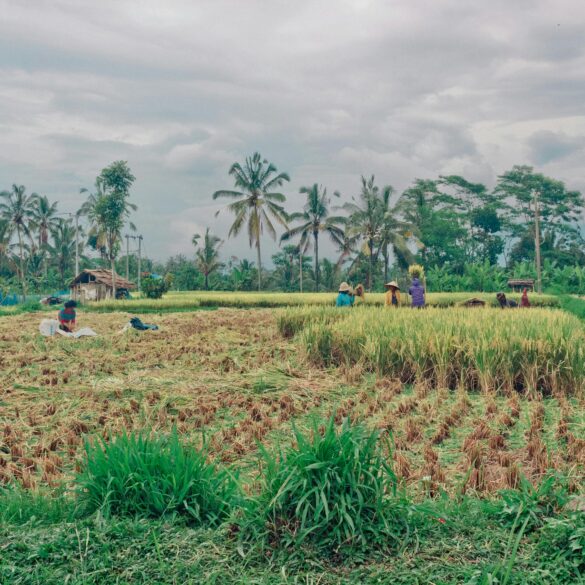Remote Workforce Management Strategies for Indonesian Tech Companies
There’s something paradoxical about remote work in Indonesia’s fast-growing tech sector. Right now, almost daily, founders and CTOs juggle rapid growth and distributed teams—while staring down regulatory changes that seem to shift just when you get comfortable. I’ve found myself, in Jakarta traffic or on video calls from Ubud, coming back to this one hard question: How on earth do you optimize remote workforce management—for real—not just in theory?
Here’s the truth: While remote work brings massive flexibility and access to talent across Surabaya, Bandung, and Bali, it also introduces new risks, inefficiencies, and cross-cultural quirks. Whether you’re running an AI SaaS startup or a fintech platform, optimizing remote team management here is a blend of hard data, messy reality, and nuanced strategy. Now, as the post-pandemic labor market continues to evolve, it’s no longer about “just making it work”; it’s about building sustainable, high-performing systems that scale—and last.
Why does Indonesia have its own remote management challenges? Well, aside from 17,000 islands, you get a stunningly diverse labor pool, patchy infrastructure, unique employment laws, and a vibrant startup culture that’s constantly learning on the fly1. Honestly, the jury’s still out on universal best practices. But having spent years managing remote tech teams up and down Java—and making my share of mistakes—I’ve realised that success boils down to mindset, regulation, digital infrastructure, and leadership adaptation.
Indonesia’s Remote Work Evolution: Context Matters
Ever wonder why remote work in Jakarta is radically different from remote work in Singapore—not just geographically, but how things actually function day to day? It’s about more than internet speed or time zones. Indonesia, with its vibrant tech scene, saw an explosion of remote arrangements in 2020 that was, frankly, a bit chaotic2. Suddenly, companies from Medan to Denpasar scrambled to adopt Slack, Zoom, and virtual onboarding protocols before fully understanding their own labor laws or tax implications.
Back in 2018, I remember seeing remote work as a “perk” reserved for multinational tech employees. Today, local unicorns like Gojek, Tokopedia, and emerging SaaS players have normalized “WFH,” but the underlying management strategies remain a confusing mix of borrowed Silicon Valley playbooks and homegrown improvisation. My early experiment with remote product teams in Yogyakarta and Surabaya? Let’s just say that asynchronous communication was “easier said than done” and cross-cultural misunderstandings popped up everywhere—a lesson you won’t learn from generic remote work tips found online.
Foundational Pillars of Remote Workforce Management
Let’s start with the basics—because, to be honest, most companies muddle these early steps. From my experience, every successful remote setup in Indonesia depends on four foundational pillars:
- Regulatory Compliance & Legal Clarity: Navigating Manpower Law, employment contracts, and digital tax regulations (which change often and can catch you off guard)4.
- Digital Infrastructure & Security: Reliable internet, cloud platforms, and cybersecurity that meet both international standards and local realities.
- Cultural Alignment & Trust: Building authentic connection and psychological safety across teams from different islands, backgrounds, and time zones.5
- Performance Measurement & Accountability: Setting metrics, reviewing progress, and creating clear feedback loops even for fully remote contributors.
Funny thing is—most leaders I know try to shortcut these pillars and end up with remote teams that feel disconnected, struggle with churn, or run afoul of legal headaches. It’s not glamorous, but getting the groundwork right is absolutely essential.
So, let’s unpack how you actually do this in Indonesia. Not theoretically—but what actually moves the needle in real life.
Building Compliance and Local Talent Strategies
You’re probably wondering, “What does true compliance even look like for remote tech teams in Indonesia?” Truth be told, even seasoned HR managers often find themselves revisiting this issue as local regulations shift (and, believe me, they shift fast). For instance, the Omnibus Law has made remote contracts, benefits, and taxation more complex—but also, paradoxically, more flexible if you know how to parse the fine print6.
Based on my experience, the best remote management leaders here don’t just delegate this to their legal counsel. Instead, they actively review:
- Contract templates customized to remote hires across provinces
- Explicit tax compliance for freelancers and employees
- Up-to-date health/social security benefits mapping
- Data privacy documentation for cloud services and remote access
Last month, during an audit in Jakarta, our team realized our remote onboarding docs didn’t actually match BPJS compliance standards—a painful, teachable moment. (More on that in a minute.) Also, don’t underestimate the importance of provincial hiring variations. For instance, some regions require additional labor notifications, while others prioritize religious holiday payouts.
Honestly, there isn’t a universal checklist—but here’s a mobile-friendly table with compliance basics:
| Policy Area | Local Requirement | Best Practice | Common Pitfall |
|---|---|---|---|
| Employment Contracts | Digital sign-off, provincial language options | Update quarterly, verify legality | Copy-pasting foreign templates |
| Tax & Payroll | Remote filing, local tax ID matching | Automate calculations via trusted SaaS | Ignoring freelance regulations |
| Health/Social Security | BPJS inclusion, province-by-province | Check updates each January | Assuming on-site policies apply |
| Data Privacy | Explicit cloud and remote access rules | Audit annually, train all staff | Overlooking local consent laws |
Key Insight:
Staying ahead in compliance means embedding legal review and documentation into every onboarding cycle—not just as a “nice to have,” but as a must-do for Indonesian tech leaders. Review every process as if your audit is tomorrow (because, frankly, one day it will be)7.
Digital Infrastructure: Building a Resilient Remote Foundation
While many believe Indonesia’s digital infrastructure is “good enough,” the reality for tech operators is a bit more patchy. I’ll be completely honest: Even in central Jakarta, network outages and security vulnerabilities pop up at the worst moments. Building resilient systems across remote teams isn’t just about picking the right SaaS tools—it’s about testing, redundancy, and ongoing adaptation.8
From my perspective, the foundations include:
- Tiered cloud access for documentation and code (think AWS or locally compliant services)
- Zero-trust security setups (VPNs, mandatory 2FA, annual penetration tests)
- Redundant communication channels (Slack, WhatsApp, SMS for mission-critical alerts)
- Weekly system audits for performance analysis
This is where I get passionate. Last year, we rolled out a multi-cloud redundancy after losing access during a major Jakarta flood—something tech teams in SF rarely think about. Let that sink in for a moment. What works in Silicon Valley is often only a rough blueprint for Indonesia.
Call to Action:
Review every element of your digital stack. Ask yourself: “Where in this process could we break down tomorrow?” Don’t wait for disaster—prevention is everything.
Talent Acquisition for Remote Indonesian Tech Teams
Recruitment changes dramatically when your workforce is scattered from Aceh to Papua. You’re no longer just evaluating skills—you’re assessing self-discipline, connectivity, cross-cultural humility, and legal eligibility for fully remote work.
A colleague once said: “Hiring remote in Indonesia isn’t about finding the best coder—it’s about finding the best communicator.” I’ve consistently found this true. Here’s my breakdown of what works:
- Prioritize asynchronous collaboration skills over sheer technical ability
- Test real-world scenario problem-solving (not just algorithm tests)
- Assess home infrastructure and self-management capacity
- Verify legal ability to work under local remote contracts
Pro tip: Source candidates from a mix of university programs, professional networks, and respected Indonesian developer communities like Dicoding. You’ll find that talented remote-ready profiles aren’t always obvious from their LinkedIn. But—watch carefully for “freelance drift,” where candidates split time across conflicting remote roles. That mistake cost us a key developer last summer.
To sum up, remote team optimization for Indonesian tech means legal rigor, digital adaptation, and hiring with a keen eye for communication and accountability. It’s never static—you’re always tweaking, re-checking, and, yes, sometimes completely rethinking strategy.

Fostering Collaboration and Performance Across the Archipelago
Ever tried running a sprint planning session with contributors in Bali, Bandung, and Batam—and heard someone’s motorbike in the background? That’s remote work in Indonesia. Collaboration looks totally different across 17,000 islands. In my experience, remote team success hinges on replacing “proximity trust” with “process trust.”9
Here’s what I’ve found actually keeps teams functioning (and thriving):
- Establish regular, documented rituals: daily standups, weekly OKR reviews, quick-fire retros
- Mandate meeting-free blocks to enable autonomous work
- Build clear escalation paths for blockers—avoid silent struggle mentality
- Create informal virtual “water cooler” sessions for cross-team bonding
- Implement anonymous feedback loops (Google Forms, Pulse Surveys)
“The ability to collaborate remotely is less about the tools you use, and more about the habits and rituals your team chooses to practice every single day.”
One thing I should clarify: These rituals don’t form overnight. It took our SaaS team almost four months to find the right cadence for standups that actually delivered value. Sometimes we over-iterated, sometimes we resisted change. The point is—adapting your collaboration model has to be iterative, deliberate, and, frankly, a bit uncomfortable at first.
Now about performance: How do you actually measure remote productivity in Indonesia? From my perspective, the old “hours worked = output” model fails here. Instead, switch to outcome-based metrics, blended with regular peer reviews (something Indonesian professionals often value highly). Consider this approach:
| Performance Metric | Remote Adaptation | Indonesian Nuance | Pitfall to Avoid |
|---|---|---|---|
| Project Delivery | Track milestones, not hours | Factor in local events & holidays | Assuming uniform speed |
| Peer Review | Anonymous survey + feedback | Respectful language, contextual awareness | Too blunt feedback damaging morale |
| Product Adoption | User engagement analytics | Mobile-first usage dominant | Ignoring rural connectivity |
Still, every system has its limits—especially when culture comes into play. What really strikes me about Indonesian teams is their preference for indirect feedback and group harmony. Sometimes, direct criticism just does not land as intended. I go back and forth on how best to foster constructive performance reviews, but I’ve found success with a mix of regular peer surveys and private coaching sessions.
Practical Advice:
Frame every remote review through the lens of mutual growth, not individual critique. The more you make feedback about joint progress, the greater your odds of real improvement.
Culture, Wellbeing, and Sustainable Leadership for Distributed Teams
Let me step back for a moment. None of this matters if your remote teams feel burned out, disconnected, or undervalued. Here in Indonesia, where family ties and communal values run deep, remote leadership is as much about wellbeing as about productivity.11
Here’s the thing: the transition to remote work has challenged traditional employee support systems. You can’t just host annual outings in Bandung anymore—now you have to build empathy and inclusion into everyday remote rituals.
- Encourage PTO and mental health days—including for contract remote talent
- Invest in “wellbeing stipends” for home office upgrades
- Celebrate local festivals virtually—Hari Raya, Chinese New Year, etc.
- Offer encrypted support lines for confidential counseling
- Host regular “voice only” team check-ins to combat video fatigue
My own learning curve here was steep. Initial attempts at remote engagement felt flat—until we embraced Indonesia’s cultural preference for group acknowledgment and started hosting open mic events during virtual team meetings. It’s not a magic bullet, but it added genuine warmth.
“Sustainable remote work is not just about technology—it’s about human connection at scale, especially in a country as diverse as Indonesia.”
Future Trends & Strategic Adaptation for Indonesian Tech Companies
Looking ahead, Indonesian remote workforce management will be shaped by accelerating tech adoption, expanding regulatory scrutiny, and pressure to deliver real innovation with distributed teams. What I should have mentioned earlier is the growing role of AI-driven dashboards for global performance management: these tools aren’t just “nice to have” anymore—they’re becoming essential for real-time team optimization12.
Let me think about this: As new labor laws roll out (expected Q1 next year, according to regulatory forecasts), flexibility will increasingly be defined as organizational agility rather than just remote access. It’s about:
- Proactive regulatory adaptation (monitor new BPJS and tax policies)
- Integration of AI and automation for recruitment and HR operations
- Upgrading digital infrastructure as a core business priority
- Continuous investment in cultural training and leadership development
Last quarter, Indonesia’s Ministry of Manpower signalled new requirements for remote employment documentation—a trend that will only accelerate. Those of us managing distributed workforces will need to regularly retrain teams on new compliance checklists, update digital protocols quarterly, and stay open to restructuring collaboration habits with every new regulatory wave.13
Actually, thinking about it differently, we’re entering an era where remote management isn’t a “special project”—it’s the default core function for Indonesian tech companies. Those who accept ongoing adaptation as reality, not inconvenience, will outcompete slower rivals. The more I consider this, the more convinced I am that sustainable success comes from blending international best practices with local wisdom and regulatory vigilance.
Call to Action:
Audit your remote workforce systems this month. Build a culture of experiment, vulnerability, and ongoing learning. Optimize for compliance, collaboration, and wellbeing—because remote isn’t merely a temporary fix, it’s Indonesia’s new tech normal.
References
Cited Sources



